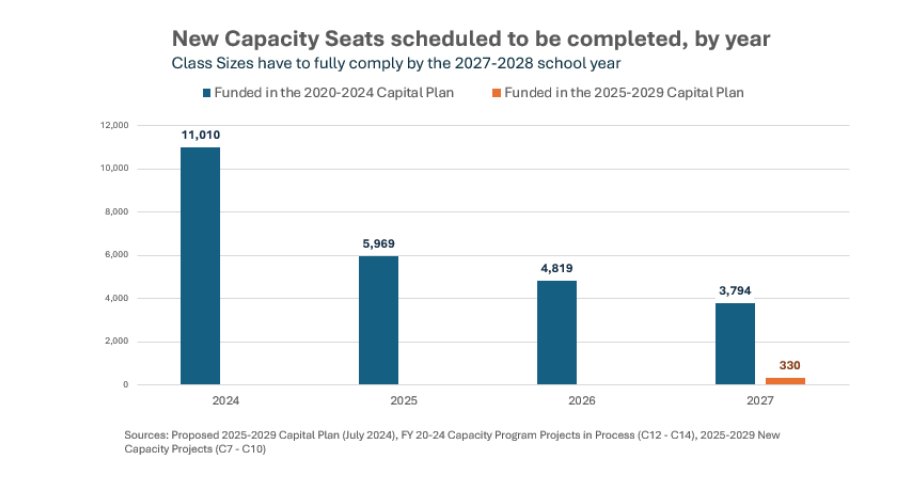The second and final NYC Mayoral debate happened on Thursday night. Education and more specifically class size was one of the main topics covered. Katie Honan of the online publication The City asked each of the candidates their views on the law passed by the Legislature in 2022, requiring NYC lower class size in all grades.
The full video of the debate is here; and the section concerning education is posted above. I have also posted a transcript of the education section. I encourage people to watch the whole thing.
Thankfully, the only candidate on the panel to openly oppose reducing class size was Whitney Tilson, a retired hedge fund investor and charter school board member, though some candidates seemed more enthusiastic than others. Tilson repeated a well-worn myth often put forward by those who oppose lowering class size: that the need to hire new teachers will offset any benefit that would otherwise accrue from smaller classes.
Yet nearly every controlled study shows significant gains in student outcomes after class sizes are reduced. One study showed that even after Los Angeles tripled its hiring of elementary teachers following the state’s class-size reduction initiative, “the district was able to do so without experiencing a reduction in mean teacher effectiveness.”
Moreover, even if new teachers may be less adept than veteran teachers, the research also suggests that smaller classes are likely lead to lower teacher attrition rates, which in NYC are 24% over four years. Teacher turnover is especially problematic in our highest-need schools. This means that as class sizes are reduced in NYC, the result will likely be a far more experienced and skilled teaching force over time. [Interestingly, even as he supports raising the cap on charter schools, it doesn’t appear to bother Tilson that the annual attrition rate of Kipp charter schools in New York, on whose board he sits, is 23% - meaning they have to hire about one fourth of their teachers every year.)
Another issue that came up during the Mayoral debate was whether the state should provide more funding to NYC to lower class size, which both Cuomo and Lander argued would be necessary.
My view, which I explained in detail in testimony on Foundation Aid, is that the state should only send more funding to the city for class size reduction if and when NYC puts forward a detailed, multi-year class size plan showing how those funds would be effectively used for this purpose. The Department of Education has yet to propose any such plan, even though it is required by law.
The plan should include how they will provide sufficient space for smaller classes in the nearly 500 schools that are too overcrowded at their current enrollment to lower class size to required levels. Our analysis shows that these schools currently enroll nearly half of all students. Even then, there needs to be rigorous oversight by the state to ensure that the funds are spent appropriately towards the intended result.
Twice in the last 25 years, the state has sent millions in additional aid to the city specifically for smaller classes, and both times the city improperly used those funds to supplant their own spending on teachers.
The first time this occurred was in 2000-2006, when the state provided more than $88 million annually as part of the Early Grade Class Size Reduction Program. Yet two State Comptroller audits, in 2002 and 2005, found that the extra dollars did not lead to as many new classes as they should have, because the DOE instead simply cut their own spending for teachers.
In 2007-2008, the state created the Contracts for Excellence program, and with it, provided nearly a billion additional dollars to NYC, along with a requirement that a portion be used to lower class size in all grades. Instead, class sizes increased sharply. Another audit, this time from the NYC Comptroller’s office, showed that these funds were again “improperly used to pay for teacher positions that would have existed without the ….program.”
In short, DOE has a terrible record when it comes to class size. Whoever the next mayor may be, he or she cannot be trusted to do the right thing without first showing us a detailed plan for how the money would be spent. Even then, DOE must be watched like a hawk to ensure the funds are invested to provide all NYC students with smaller classes, which is their right under the state constitution, according to New York's highest court.
















